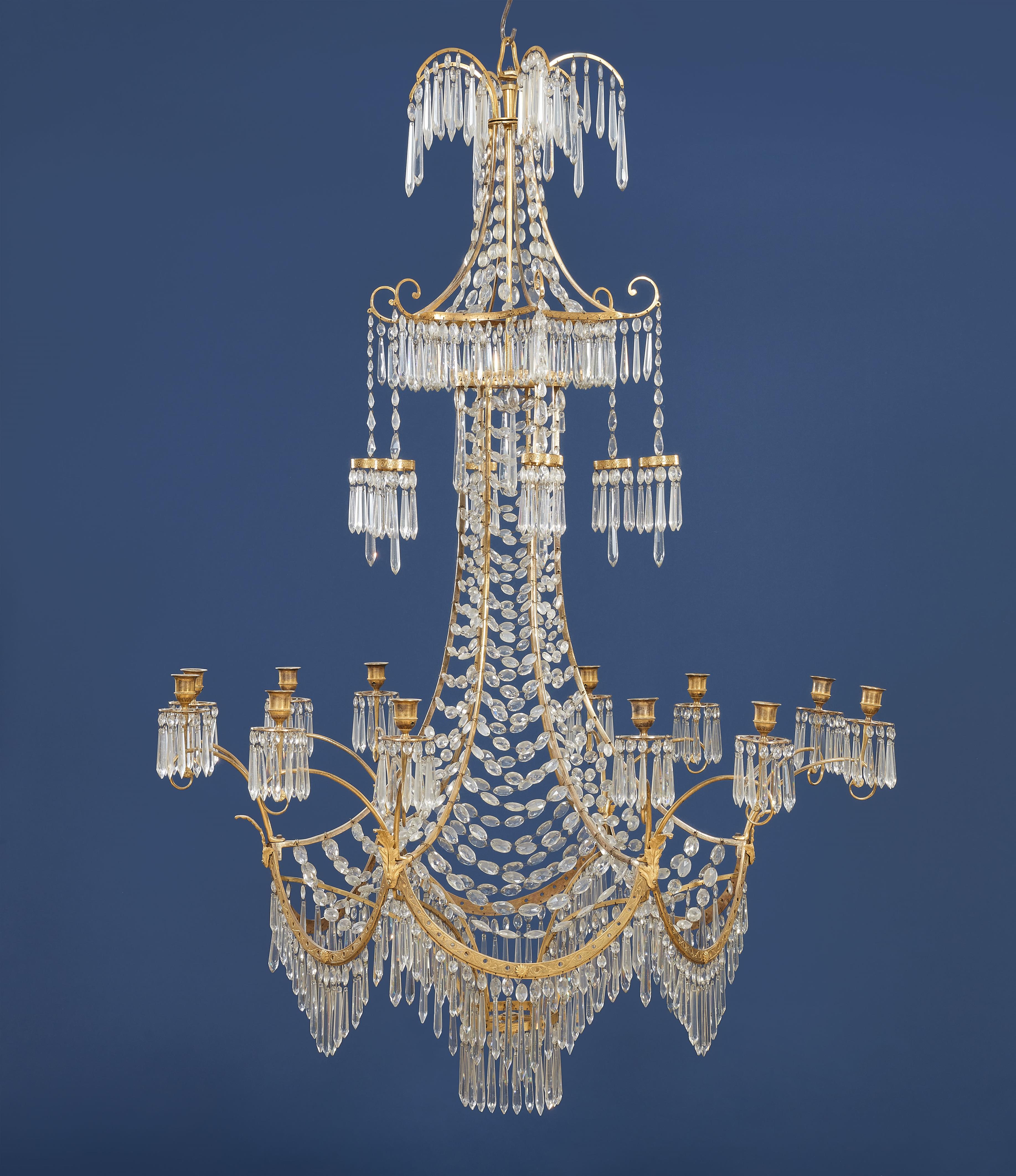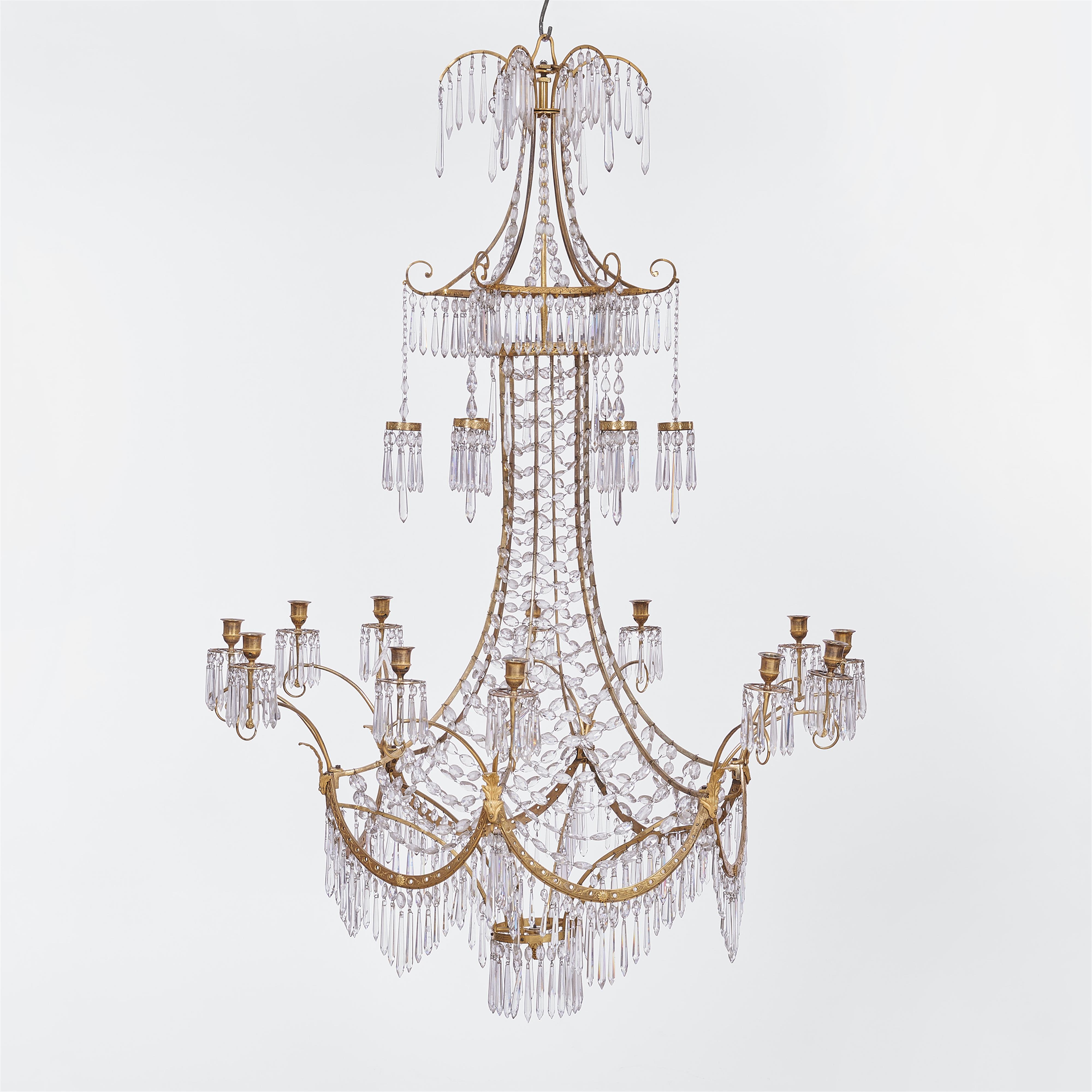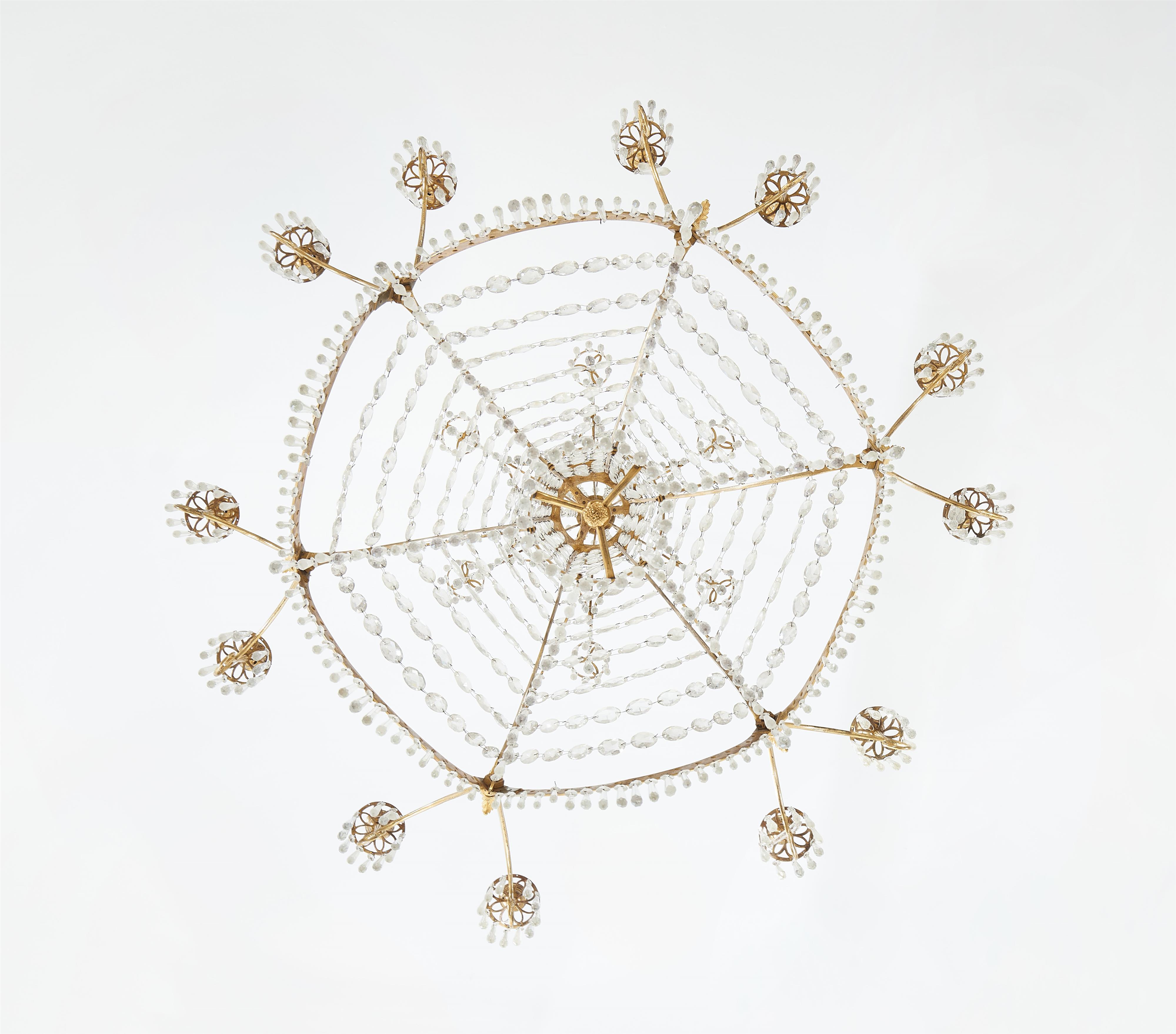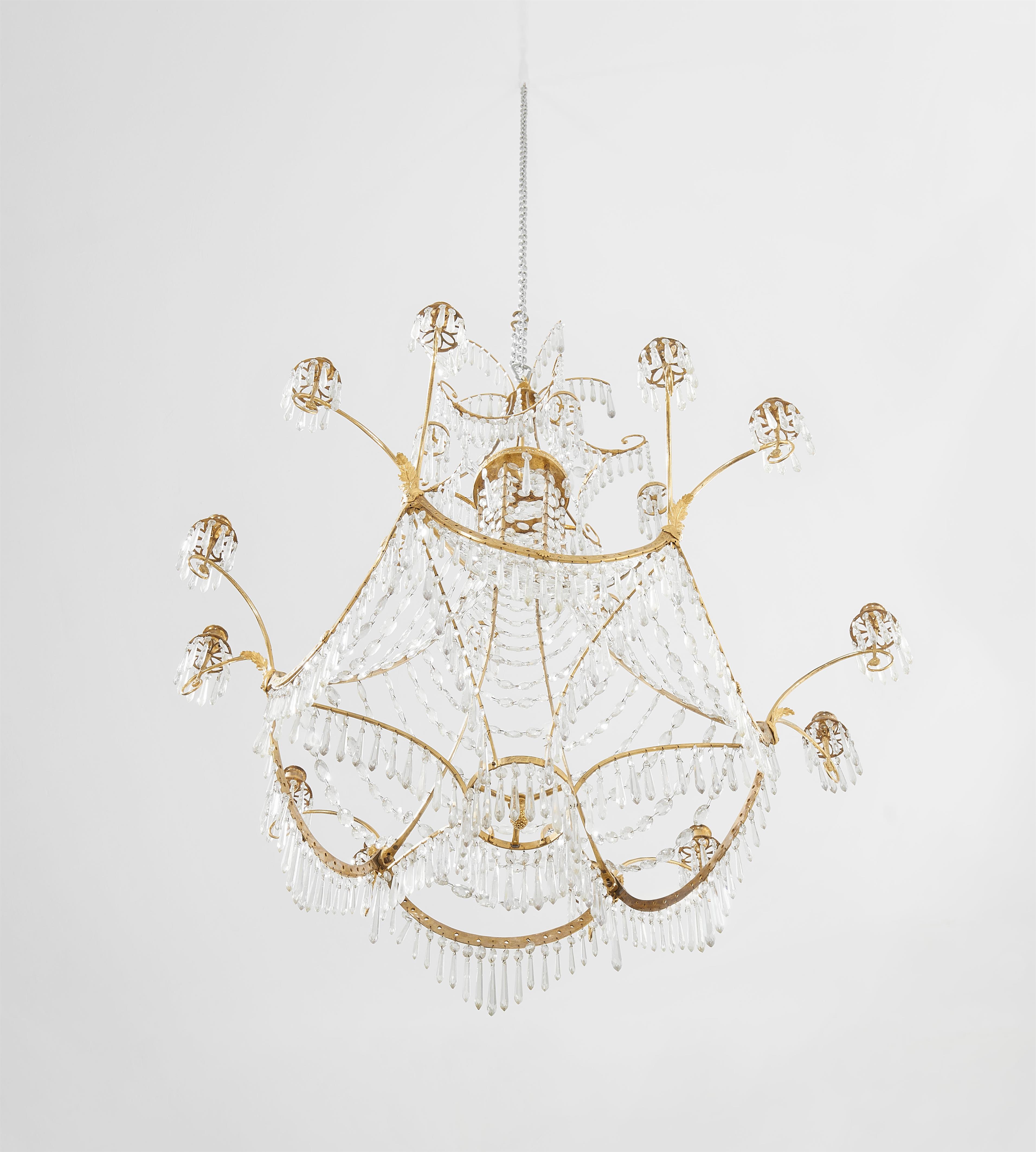An opulent chandelier in the form of a Chinese pagoda
Gilt bronze/brass, cut glass. With twelve branches issuing from six arcs forming the lower hoop. Six further lanterns issuing from the crystal canopy above, surmounted by six palm branches hung with crystals. The tapering shaft densely draped with crystal adorned horizontal chains. H c. 130, D c. 90 cm.
Berlin, attributed to the bronzeware manufactory of Christian Gottlob Werner & Gottfried Mieth, late 18th / early 19th C.
The two Berlin-based craftsmen Christian Gottlieb Werner and Gottfried Mieth began their careers in the Royal Porcelain Manufactory as modelers and embossers. In 1791, they started their own business with the idea of founding a "Bronze und Kunstsachen Fabrik" (factory for bronzes and objets d'art), entering into partnership with the master brass caster Friedrich Luckau jun. The workshop was located in Leipziger Strasse, and in 1801 they moved into a building on Jägerstrasse. Their high quality products were designed to appeal to an international, aristocratic and wealthy clientele.
The company was organized according to the English model of division of labor, with cost-saving pre-production of individual parts. The emphasis was on contemporary design, which was to be clearly distinguished from traditional lighting. The purchasing public could order from catalogues or commission individual works. Werner & Mieth became known for the unique works they produced for the Prussian court shortly after the company's founding. Wilhelmine von Lichtenau, the mistress of King Frederick William II, had already ordered chandeliers and bronzes in the spring of 1793 and introduced the two entrepreneurs to the court. This was followed by orders for the royal palace of Unter den Linden and the winter chambers in Charlottenburg Palace. Werner & Mieth were later able to gain the services of Karl Friedrich Schinkel as a designer and eventually went on to establish warehouses in Berlin, Hamburg, Leipzig, Breslau and London and also delivered to St. Petersburg.
Provenance
From a French collection.
Literature
The information about the bronze manufactory was derived from Birgit Kropmanns (Klappenbach, Kronleuchter des 17. bis 20. Jahrhunderts aus Messing, „bronze doré“, Zinkguss, Porzellan, Geweih, Bernstein und Glas, Berlin-Brandenburg-Regensburg 2019, p. 190 ff.)








